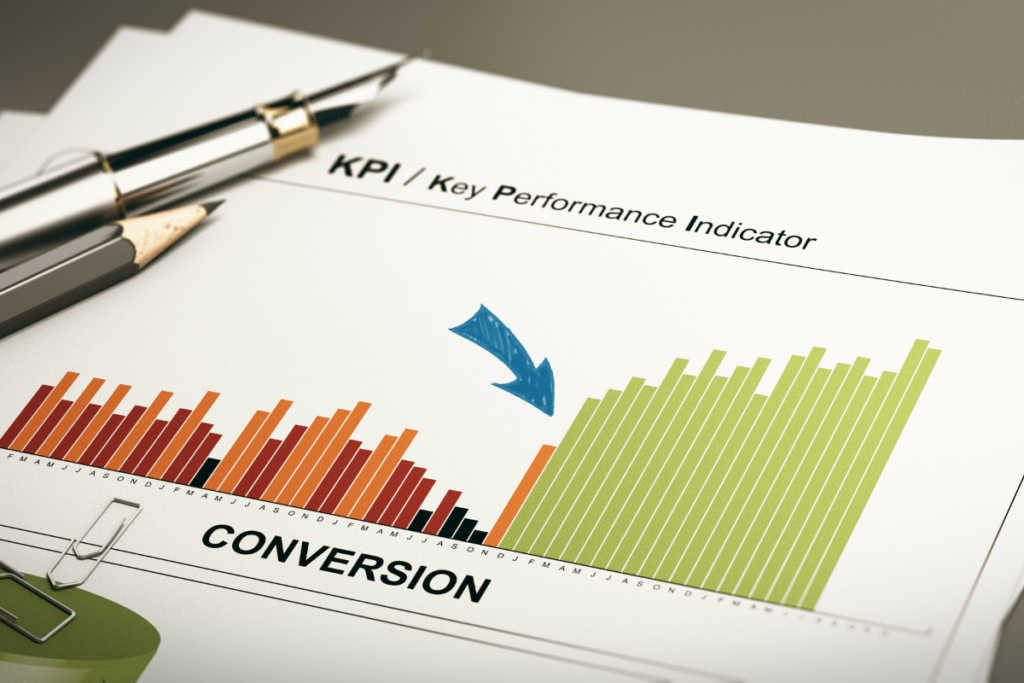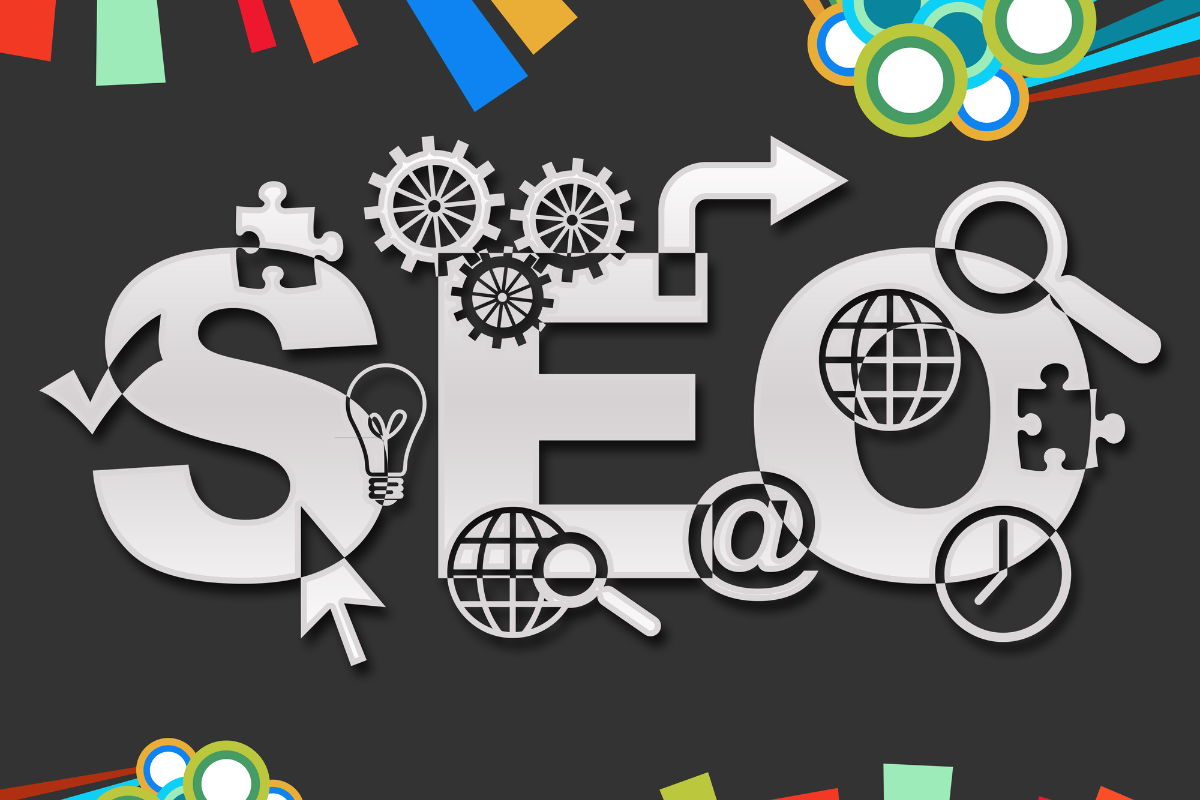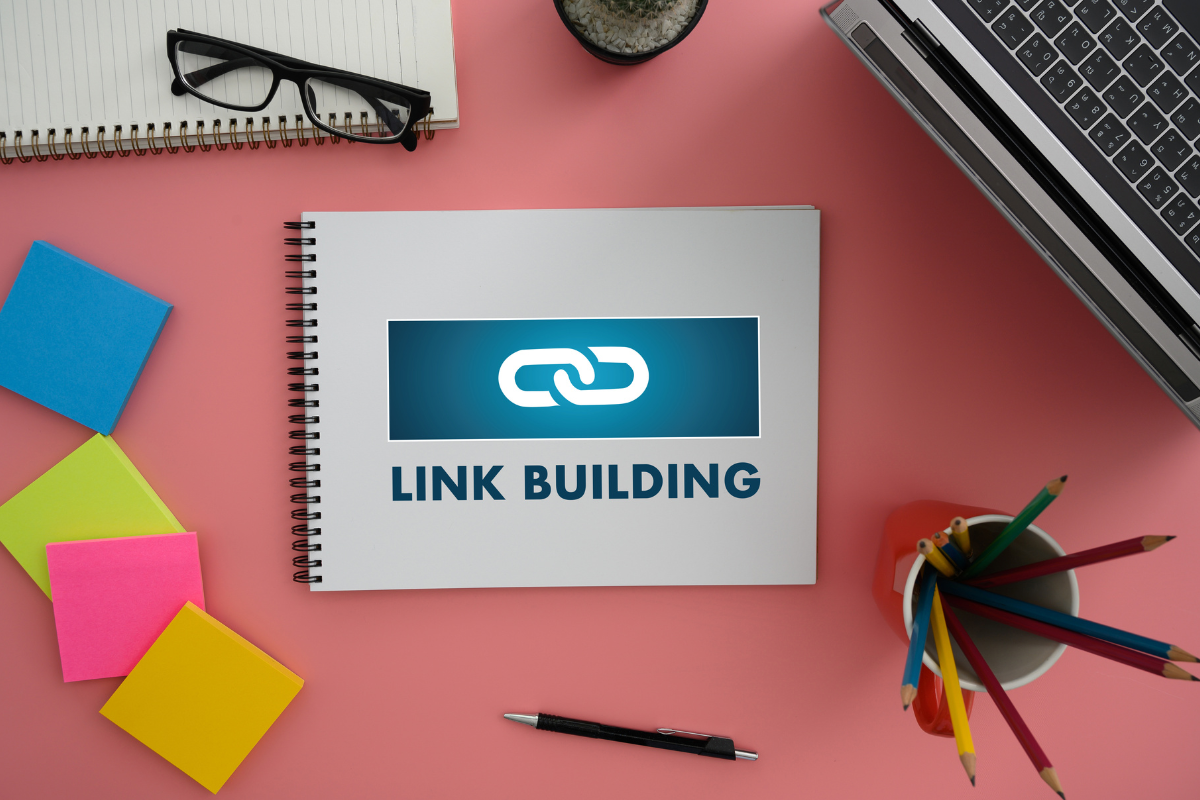
Post Title
Unlocking the Secrets of SEO Conversion: From Traffic to Sales
October 12, 2024
Picture this, you're attracting a flood of visitors to your website, yet conversions remain elusive. In the world of digital marketing, driving traffic is only half the battle. The real triumph lies in converting those visitors into loyal customers. This blog post unveils the secrets of SEO conversion, offering insights and strategies to transform your organic search traffic into tangible sales. Whether you're a small business owner, an SEO enthusiast, or a digital marketer, read on and discover how to maximize your conversion potential.
Why Should You Care About SEO Conversions?

The purpose of SEO extends beyond merely increasing website traffic. While boosting your site's visibility is important, the ultimate goal is to drive meaningful actions, like sales, leads, or subscriptions. This guide dives deep into the essentials of SEO conversion, covering fundamentals, key metrics, proven strategies, and actionable tips tailored for your success.
SEO conversion is all about turning organic search visitors into customers. To achieve this, it's crucial to focus on quality traffic and align your SEO efforts with your business objectives and user intent. By optimizing for conversion, you create a win-win situation; your visitors find what they need, and you achieve your business goals.
Ready to boost your conversion rates? Let's explore the practical steps and insights that can empower you to take your marketing efforts to the next level.
Defining SEO Conversion
SEO conversion is the process of transforming organic search visitors into specific actions, such as making a purchase or subscribing to a newsletter. It's essential to understand that bringing visitors to your site isn't enough; you must persuade them to take the desired action.
Conversion Rate Optimization (CRO) plays a pivotal role in enhancing the likelihood of turning visitors into customers. By focusing on quality traffic and aligning your goals with user intent, you create a seamless pathway that guides potential customers through their decision-making process.
To effectively convert organic traffic, your SEO strategies should be aligned with your business goals. This means understanding your audience's needs, anticipating their questions, and delivering solutions that resonate with them.
Understanding the SEO Conversion Rate
To gauge the effectiveness of your SEO efforts, you need to understand the SEO conversion rate. This metric represents the percentage of organic visitors who complete the desired action.
The formula for calculating SEO conversion rate is simple:
SEO Conversion Rate = (Conversions from Organic Traffic ÷ Total Organic Visits) × 100
Tracking your conversion rate offers valuable insights into how well your website engages visitors. High conversion rates indicate effective engagement and user satisfaction, while low rates highlight areas for improvement and optimization.
For example, if your website receives 1,000 organic visits in a month and achieves 100 conversions, your SEO conversion rate would be 10%. By regularly monitoring this metric, you can make informed decisions to enhance your site's performance.
Benchmarking: Average SEO Conversion Rate

Understanding industry-specific benchmarks for SEO conversion rates is crucial. It helps you set realistic goals and assess your competitive performance.
Different industries have varying average conversion rates, so it's important to research benchmarks relevant to your niche. Tools and reports like Google Analytics and industry studies can provide valuable insights into what constitutes a healthy conversion rate for your business.
Setting achievable goals based on these benchmarks allows you to refine your strategies and continuously improve your conversion rates. Remember, the key is to focus on consistent growth rather than chasing unrealistic targets.
SEO Conversion Funnel Stages
The SEO conversion funnel consists of three main stages, each requiring tailored strategies to move visitors smoothly from awareness to action.
Top of the Funnel (TOFU): Awareness Stage
At the top of the funnel, the primary goal is to capture the attention of potential customers. This stage is all about building brand awareness and attracting new visitors.
Content strategies play a vital role in this stage. Create valuable, optimized content that addresses your target audience's pain points and needs. Blog topics like "SEO Tips for Small Businesses" are excellent examples that offer practical insights and draw in curious readers.
The key is to ensure your content resonates with your audience and encourages them to explore your website further.
Middle of the Funnel (MOFU): Consideration Stage
In the consideration stage, your focus shifts to building relationships with those who have shown interest in your brand. This stage involves nurturing leads and guiding them towards making a decision.
Engagement strategies such as case studies, lead magnets, and email marketing can be highly effective. Offer free guides or success stories that showcase how your products or services solve specific problems.
The aim is to provide valuable information that establishes trust and credibility, encouraging visitors to move closer to conversion.
Bottom of the Funnel (BOFU): Decision Stage
The bottom of the funnel is where conversions happen. At this stage, your goal is to facilitate the final decision-making process.
Conversion strategies such as landing page optimization, clear calls-to-action (CTAs), and a smooth checkout process are crucial. Ensure that the path to conversion is straightforward and frictionless.
Focus on streamlining sign-ups or purchase paths to eliminate any barriers that could deter potential customers from taking the desired action.
Essential SEO Conversion Metrics

Improving your page load speed by even a modest 10% can lead to a noticeable decrease in bounce rates, which directly impacts your SEO conversion rate. Google places high importance on load speed, particularly with its continued focus on mobile-first indexing.
This intersection of SEO conversion optimization and search engine performance highlights how essential it is to streamline load times, enhancing both user experience and search visibility. To maximize your SEO conversion potential, it’s essential to monitor critical metrics that reveal meaningful insights into user engagement and behavior.
Bounce Rate
Bounce rate measures the percentage of visitors who leave your site after viewing only one page. A high bounce rate may indicate content irrelevance or poor user experience.
To reduce bounce rates, focus on improving content relevance, website speed, and navigation. Engaging content that matches user intent can keep visitors on your site longer.
By addressing these factors, you can create a more inviting and enjoyable user experience.
Average Time on Page
Average time on page indicates how long visitors spend on a specific page. Longer time suggests that visitors find your content engaging and valuable.
To increase engagement, offer engaging content, related links, and easy readability. Use headings, bullet points, and visuals to break up text and improve readability.
Encouraging visitors to spend more time on your pages can enhance their understanding and increase the likelihood of conversion.
Click-Through Rate (CTR)
CTR measures the percentage of users who click on a specific link compared to the total number of users who view a page or email.
Optimized titles, meta descriptions, and structured data can boost CTR. Craft compelling headlines and descriptions that entice users to click through to your content.
Improving CTR increases the chances of visitors exploring your website and taking desired actions.
Overall Conversion Rate
Tracking your overall conversion rate helps you assess the effectiveness of your SEO efforts. It provides a comprehensive view of how well your website converts visitors into customers.
Techniques like A/B testing and personalization can be employed to improve conversion rates. Experiment with different elements such as CTAs, page layouts, and content to identify what resonates best with your audience.
By refining your approach, you can continuously enhance your conversion rate and drive business growth.
Google Analytics Goals
Setting and analyzing goals in Google Analytics can provide valuable insights into your conversion performance. Define specific actions you want visitors to take and track them as goals.
To configure goals, access your Analytics account, click "Admin," and select "Goals." Follow the setup steps to specify the desired actions and track their completion.
Analyzing goal data helps you identify successful strategies and areas for improvement, allowing you to optimize your SEO conversion efforts.
Strategies to Boost SEO Conversion

Boosting your SEO conversion rates requires a strategic approach that combines various techniques and optimizations.
Keyword Optimization for Conversion
Focus on long-tail keywords with high conversion potential. Research keywords that align with user intent and create targeted content around them.
Monitor keyword performance and adjust your strategy as needed. By targeting relevant keywords, you attract visitors who are more likely to convert.
Enhancing User Experience (UX)
A positive user experience is essential for encouraging conversions. Improve navigation, mobile optimization, and site speed to enhance user engagement.
Ensure that visitors have a seamless experience across devices, making it easy for them to explore your content and take action.
A/B Testing
A/B testing involves experimenting with different elements of your website to determine what drives better results. Test variations of CTAs, page layouts, and content to identify what resonates with your audience. Analyze the data to make informed decisions about optimizing your site for higher conversion rates.
Conversion Rate Optimization (CRO)
CRO focuses on designing effective landing pages, simplifying checkouts, and using persuasive CTAs. Continuously analyze and refine your strategies to maximize conversions. Ensure that your website's design and content align with user expectations, encouraging them to take the desired action.
Local SEO
For businesses targeting local audiences, local SEO is crucial. Use Google My Business, local keywords, and customer reviews to improve local search results.
By optimizing your presence for local searches, you increase visibility among potential customers in your area. HubSpot finds that 70% of people are more likely to purchase online if a product or service is recommended by others.
Email Marketing
Email marketing can be a powerful tool for lead nurturing. Segment your audience, personalize emails, and track their performance to engage potential customers effectively. Craft compelling email campaigns that guide recipients through their decision-making process.
PPC Integration
Complement your SEO efforts with targeted pay-per-click (PPC) campaigns. Use keywords and ad copy that align with your SEO strategy to maximize visibility and conversions. PPC can provide immediate results and reinforce your organic efforts.
Mobile Marketing
With the increasing use of mobile devices, mobile optimization is essential for capturing a broader audience and driving conversions. Ensure your website is responsive and user-friendly on mobile devices to enhance user experience and engagement.
Optimize Page Load Speed
Did you know that page load speed can significantly impact your conversion rates? Research shows that even a one-second delay can lead to decreased customer satisfaction and lower conversions. Here’s how to optimize load speed:
- Image Optimization:
Compress images without sacrificing quality to improve loading times. Tools like TinyPNG can help reduce file sizes effectively.
- Minimize HTTP Requests: Reduce the number of elements on your page to streamline loading. Combine CSS and JavaScript files where possible to cut down on requests.
- Leverage Browser Caching: Utilize caching techniques to store frequently accessed data, reducing the load time for returning visitors.
Build Trust to Enhance Conversion Rates
In today’s digital landscape, trust is a vital currency. If visitors don’t trust your site, they’re unlikely to convert. Here are some strategies to build trust:
- Showcase Reviews and Testimonials:
Leverage social proof by displaying customer reviews and testimonials. This not only builds credibility but also helps potential customers relate to positive experiences.
- Secure Your Site: An SSL certificate ensures that your website is secure, instilling confidence in visitors, especially when they share sensitive information. Always prioritize website security to enhance trust.
- Transparent Policies: Clearly outline your return, privacy, and shipping policies. Transparency in these areas can alleviate concerns and foster trust among potential customers.
- Engaging Content: Providing valuable content can position your brand as an industry leader. The more informative and engaging your content, the more likely visitors will view your brand as a trustworthy source.
Search Engine Experts: Your SEO Powerhouse

Navigating the world of SEO is challenging, but having search engine experts on your side can transform your strategy. Think of them as your digital marketing GPS, guiding you through the complexities of search algorithms and ranking factors.
Why should you consider SEO experts? They offer invaluable experience and insights, having studied trends and user behavior extensively. Instead of guessing what might work, you can leverage their proven techniques for real results.
One major benefit is their expertise in keyword research. They uncover hidden gems like keywords that attract highly targeted traffic, allowing your content to rank for what your customers are actually searching for.
But it’s more than just keywords. SEO experts analyze your site’s performance metrics about bounce rates, click-through rates, and user engagement to identify friction points. If your site isn’t converting visitors, they’ll pinpoint the issues and implement effective solutions.
With algorithms constantly evolving, staying ahead of the competition is crucial. SEO experts keep track of these changes and help you adapt your strategies to stay relevant and maintain your edge.
In short, partnering with search engine experts is essential for any business serious about enhancing its online presence. They empower you to make informed decisions that drive traffic, boost conversions, and grow your brand. Ready to elevate your SEO game? Invest in the expertise that can propel you forward!
Let Visio SEO Transform Your Traffic into Sales!
Improving your SEO conversion isn’t just about attracting visitors, it’s about turning those visits into genuine opportunities. By applying the strategies in this guide, you can create a seamless and engaging experience that both draws in and inspires visitors to act.
At Visio SEO, we know that transforming traffic into results calls for more than generic tactics. Our team is here to help businesses like yours tap into SEO’s full potential. Whether it’s refining keywords, enhancing user experience, or leveraging content, we create tailored solutions to align with your goals.
Why let valuable traffic slip through the cracks? Partner with Visio SEO to shape your online presence, build trust, and drive deeper engagement. Ready to make a difference in your conversion rates?
Take a moment to review your SEO approach, and schedule a free consultation with the experts at Visio SEO today. Together, we’ll turn your traffic into success that lasts.
Contact Us
Contact Us
We will get back to you as soon as possible
Please try again later
Subscribe to Our Newsletter
Stay up to date with our latest offers and promotions by signing up now!
Contact Us
We will get back to you as soon as possible.
Please try again later.

We are the premier digital marketing solution in Elgin. Contact us today to get your free, no-obligation consultation!










